Handling Singapore's ‘national treasure’: Behind the scenes at a vaccination centre
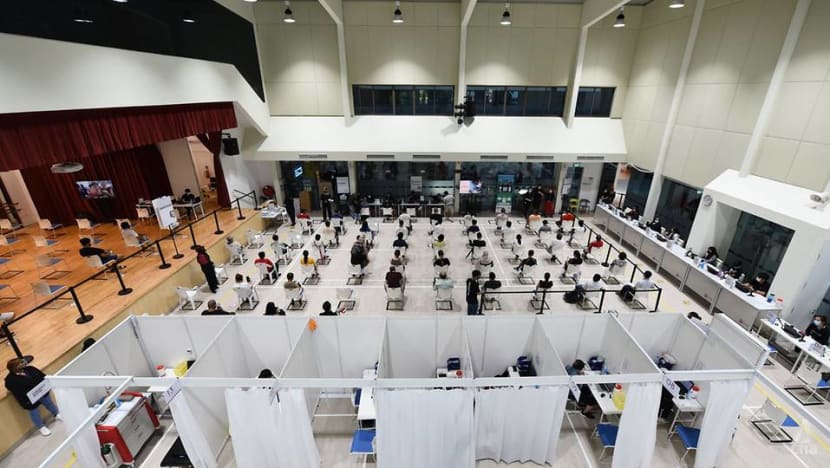
A bird's-eye view of the Minmed vaccination centre at Kolam Ayer community club. (Photo: Marcus Mark Ramos)
SINGAPORE: Before sunlight pierces through the inky sky, the fluorescent lights at Kolam Ayer Community Club flicker on.
Chairs need to be sanitised, registration tables need to be tidied, queue numbers need to be printed.
A long day awaits, and the clock is ticking.
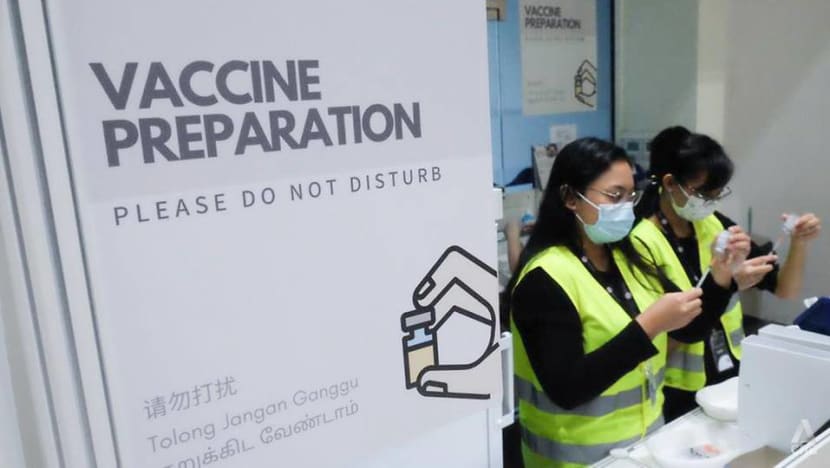
Vaccinators scurry behind the stage curtains, picking out the essentials. Alcohol swabs? Check. Plasters? Check. Gloves? Check.
Nurses carefully remove vials of vaccine from a well-stocked fridge where they have been stored at a temperature of between 2 and 8 degrees celsius. Packets of syringes are ripped open, and the precious liquid drawn.
No more, no less - the amount of vaccine that will soon course through the bloodstream of each individual needs to be the same.
Each and every syringe is checked before it moves out to the vaccination booths.
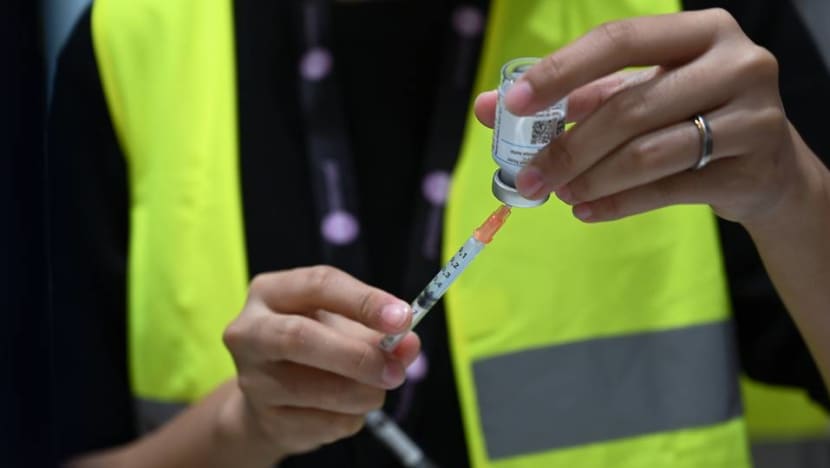
And as the growl of peak-hour traffic hits the ears, a stream of residents makes their way into the air-conditioned hall.
It is time to get jabs in arms.
"MOST OF THEM SAY THEY DON’T FEEL ANYTHING"
Vaccinator Merahbathy Subramanium is used to facing a barrage of questions from people getting the jab.
Where are the vaccines from? Why this vaccine and not that one? Can I drink alcohol after being vaccinated? How about exercising?
It comes with the territory, said the 52-year-old.
“They say that they expected Pfizer but why Moderna? So after explaining that these are similar medications, then they are okay with that. Nowadays I don't receive that kind of reaction,” she said.
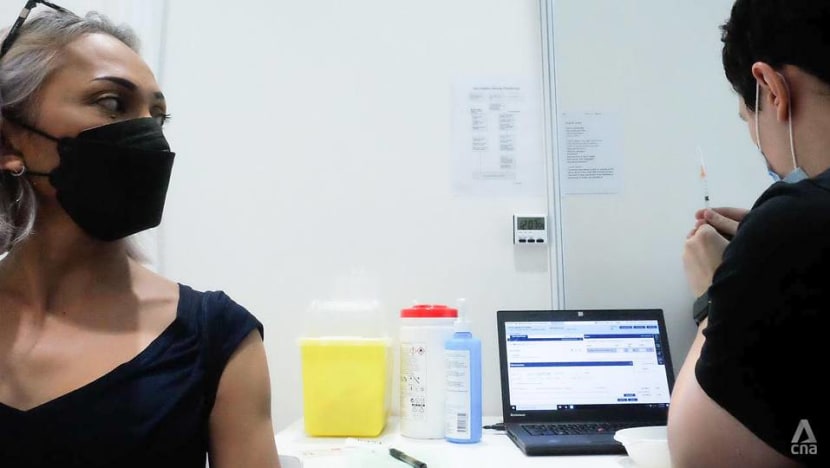
Only the Moderna vaccine is administered at this particular vaccination centre - one of the four run by healthcare provider Minmed.
The sight of needles can be a scary one for some, admitted Mdm Subramanium.
“I have seen muscular men, they also come in and say: 'Is it painful or not?'” she told CNA.
“They hadn’t even sat down yet!”
There was one occasion when a member of the public was reduced to tears at the prospect of the vaccination.
“She was very, very scared. Her husband was here to assure her, but then even before I started to poke (the needle in), she already started to cry. (It was) fear of the needle,” recalled Mdm Subramanium, who is a registered nurse.
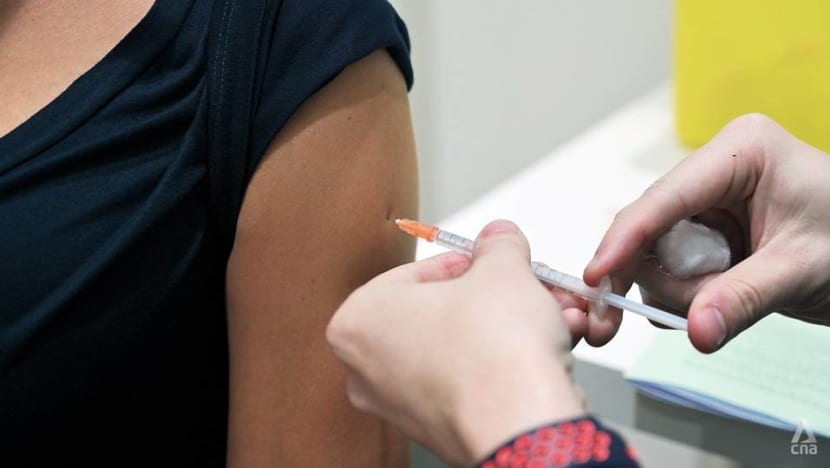
Some even ask if the injection can be done in the buttocks, rather than the arm.
“They hear that there are more muscles so it is more painless - that’s what they think,” she said.
“I tell them that the most appropriate place is on the arm; for the buttock, I cannot do it for you.”
All the vaccinators at Minmed's four centres are either registered nurses or those who already have experience with intramuscular injections, such as paramedics, said Dr Wong Jia Yi, who is the medical lead for Minmed.
In addition, these vaccinators will be enrolled in a Ministry of Health (MOH) course where they learn about the vaccine and its administration, go through on-the-job training and an assessment, before they are certified to be able to perform this role.
Beyond the actual vaccination process, the job of the vaccinator is also to talk to, assure and comfort those getting vaccinated, Mdm Subramanium noted.
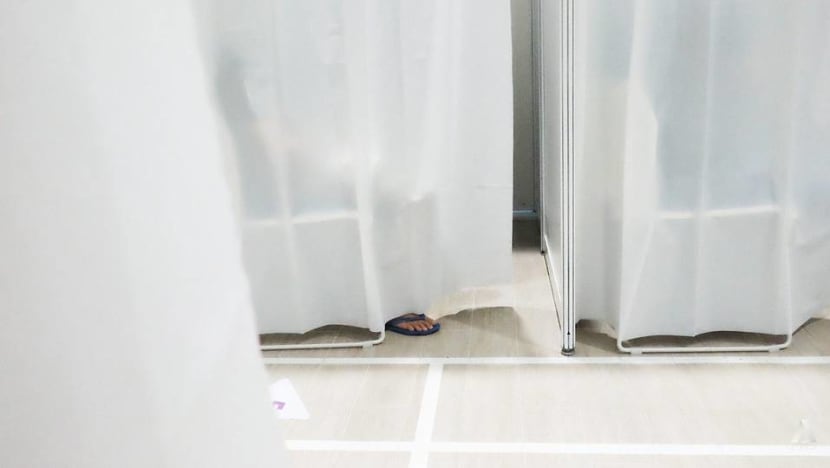
She suggests to those who enter her booth that they should make use of a breathing technique.
“The breathing technique is to make them calm, make them relaxed, so they focus on the breathing technique ... Most of the time when I do that, they always say that they didn't feel anything, whether injected or not,” she explained.
A BREAK FROM THE MONOTONY
For Dr Wong, his new task is a breath of fresh air.
He supervises medical operations at Minmed’s four vaccination centres, and is also in charge of the training of the vaccinators. In addition, he manages all the doctors at Minmed's vaccination centres.
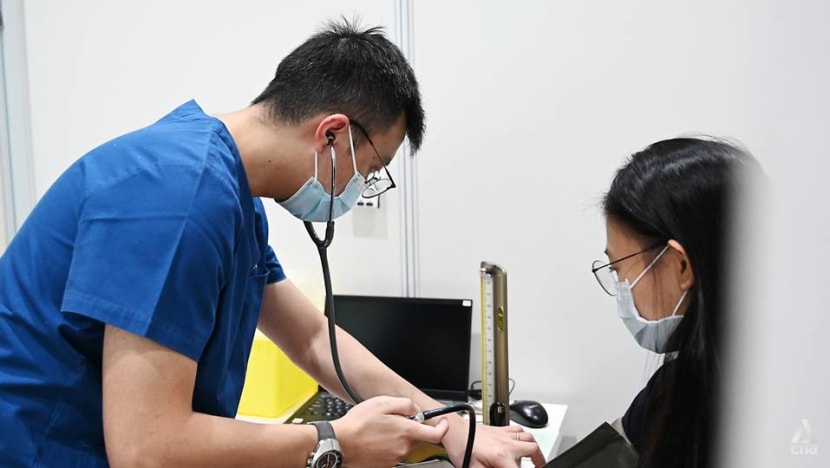
A general practitioner, Dr Wong was an anchor doctor at one of the group’s clinics prior to the posting.
“It was just a 9 to 5 job, seeing patients one on one. So, it is quite a change. This is a different perspective, a macro view,” he said.
“This is a good growth opportunity for me, it breaks the monotony of my GP life. It also gives me a chance to contribute in a meaningful way in a national endeavour.”
Should he be rostered as the resident doctor to a vaccination centre such as the one at Kolam Ayer, Dr Wong reports about 15 minutes before it opens its doors. Every vaccination centre has at least one doctor present at all times.
One of the roles of doctors such as Dr Wong is to be on standby for any medical emergency or adverse events.
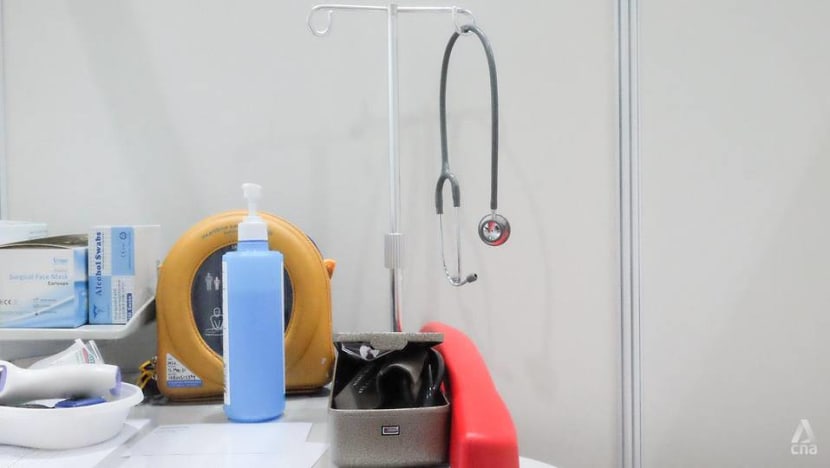
Within the Kolam Ayer vaccination centre is a consultation room where the resident doctor can see members of the public. Inside the room is an e-trolley, stocked with emergency drugs should they be required.
Among other things, these drugs can help reverse anaphylaxis or any severe allergic reactions.
“If a patient collapses, we also have our AED (automated external defibrillator) and we can administer our medication while we wait for evacuation,” explained Dr Wong.
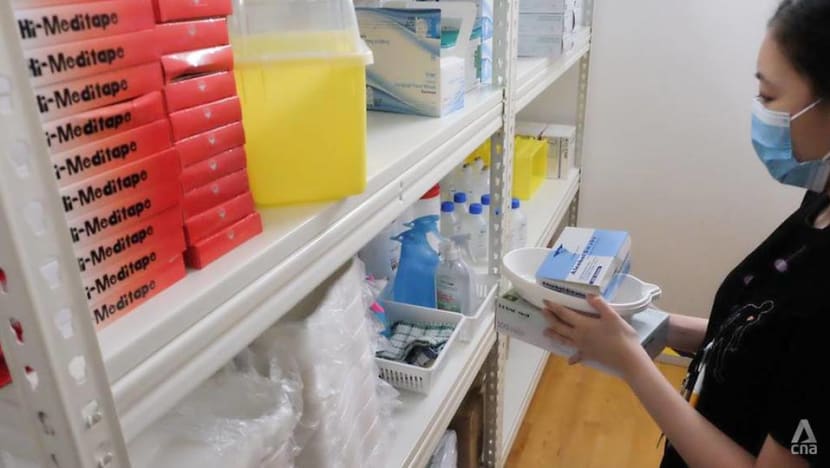
Dr Wong noted that every vaccine - not just the one for COVID-19 - comes with a risk of severe side effects.
"We know that for the Pfizer (and) Moderna vaccine, the risk of anaphylaxis is still going to be a rare occurrence; most of the side effects are going to be mild and tolerable. So when you balance the risk of getting COVID-19 versus the risk of getting a severe reaction, I think it's clear that we should still recommend the vaccination,” he added.
Dr Wong noted that a “localised reaction” following the vaccination is to be expected.
“You do expect some sort of a localised reaction. We can expect some pain at the site of the injection, some swelling, we can have a bit of fever, a bit of muscle ache, joint pain, that's to be expected,” he said.
READ: FAQ: What you should know about getting infected after COVID-19 vaccination
“Usually the symptoms are very mild and tolerable, and go away with Panadol."
The consultation room can also be used for those who have vasovagal reactions - a condition resulting in fainting because of triggers such as seeing a needle.
“Some may feel faint, some may have anxiety as well. So what we'll usually do is when we are observing if they have any concerns, we will attend to them, we will bring them to the consult room, take their parameters, the blood pressure, heart rate. We will observe them here before they are better and we let them go,” Dr Wong said.
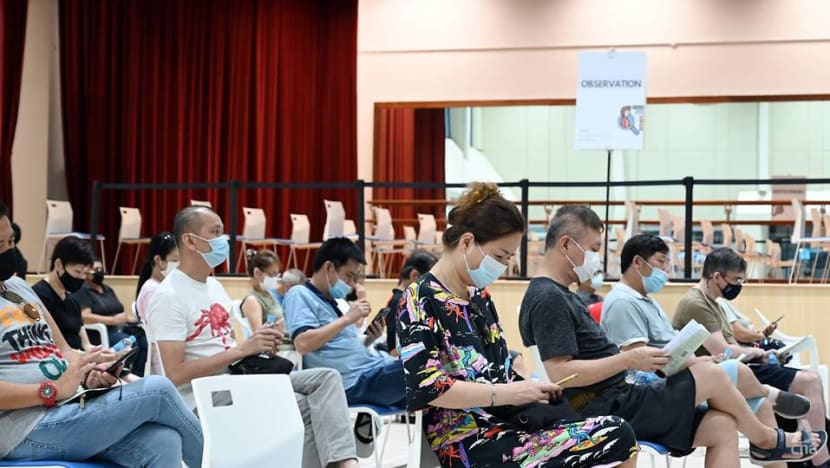
Stressing the importance of taking the vaccine, Dr Wong noted that it provides “good, effective protection” against COVID-19.
“I believe in the vaccination programme, I think this would be the step that put us back on the road towards normalcy,” he said.
“We all want to protect our loved ones, and I think vaccinations are the key … The sooner we get everyone vaccinated, the sooner we can go back to our normal life.”
The need for vaccinations in Singapore continues with more community cases seen in recent days.
READ: Public places visited by COVID-19 cases in Tan Tock Seng Hospital cluster to close for 2 days
At a multi-ministry taskforce press conference on Friday (Apr 30), co-chair of the task force Lawrence Wong noted the importance of people getting vaccinated even as cases have emerged of a few people contracting the virus after receiving both doses.
"(We should not) make the biggest mistake which is to say that all vaccinations don't work, and therefore, maybe there is no need for a vaccine. I think that would be disastrous," he said.
THE ORCHESTRA CONDUCTOR
Throughout the first shift, the number of people entering the vaccination center ebbs and flows. This peaks twice in the first shift - once at around 9 to 10am and the second after lunch.
As the observation area starts to fill up, the healthcare assistants keep a keen eye on proceedings.
Each member of the public is greeted cheerily as they enter the air-conditioned hall, and are diligently shepherded to where they need to go.
Numbers are called out, gestures are made, and the crowd is controlled as healthcare assistants gauge the number of openings available at each vaccination booth.
This is then communicated to the healthcare assistant at the door, who operates the queue system. On her touch, the new queue numbers flash on the monitor at the waiting area.
Things are methodical, swift, smooth.
At the Kolam Ayer Community Club, between 45 and 50 different staff perform different roles per shift. And the individual who ensures they all play from the same score is the site manager.
“It's a fairly large team that's on the ground. So we start with the site manager, the site manager is the orchestra conductor, so to speak,” said Minmed CEO Eric Chiam.
“He'll be in charge of the team, making sure that they are ... rostered, they are trained. And of course, before they go live, he will have to make sure that the equipping is well done, as well as the housekeeping is in good order ... the site manager is key.”
The site manager lead for Minmed is 38-year-old Desmond Choo, who supervises the day-to-day operations across the four vaccination centres including this one.
Mr Choo’s typical day begins before the first healthcare assistant arrives.
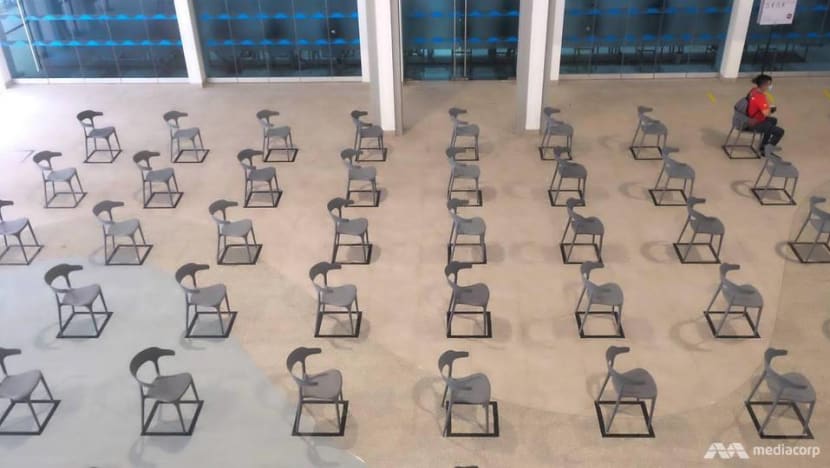
“By 7.30 am, we will carry out our own debrief and also our own briefing to the staff. After which we will actually carry on with the assigning of the roles,” he said.
“So, once we are done with the assigning of the roles, before 8am we will be good to serve our first vaccinee.”
Besides the assigning of roles, the site manager is sometimes involved in troubleshooting, said Mr Choo. This could mean lending a helping hand should healthcare assistants have issues with the keying in of information during the screening process.
He typically works a shift of seven or eight hours - either from 7am to 3pm or 3pm to 10pm, as with everybody else at the vaccination centre.
“I would say that the most enjoyable part is actually working with all the various people such as people from MOH, even the People’s Association, and of course, internally, my own people,” said Mr Choo.
“Everyone is from all walks of life and it's good that we actually gel together as a team, we managed to work together to make the project a successful one.”
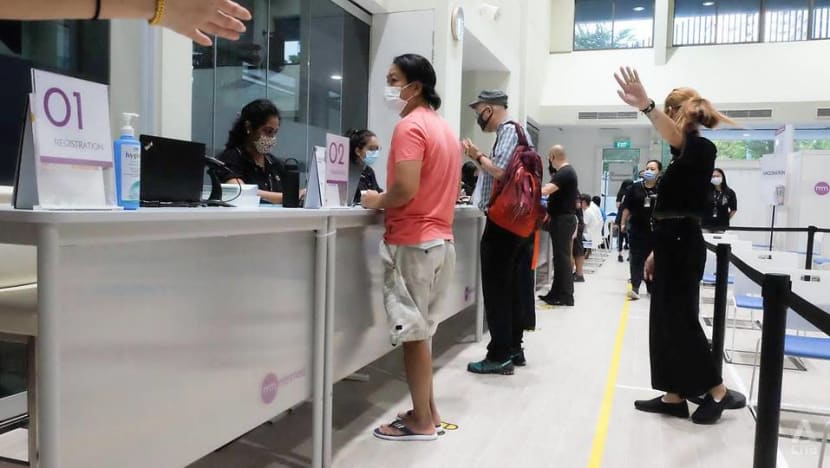
While some members of the public who have pressing requests, such as wanting to leave the vaccination centre early, the vast majority are cooperative, said Mr Choo.
“Of course we do face vaccinees who are maybe in a rush, and wanting to be discharged without the 30 minutes. So of course, it will take us ... some persuasion to let them get seated back down,” he said.
On the flip side, some members of the public go out of their way to show their appreciation, Mr Choo added.
“The residents here are quite friendly, I encountered once there were residents who even brought chocolates down for us to distribute among the staff,” he said.
“It’s not just about receiving chocolates. From time to time, when we receive some compliments for the efficiency of the vaccination centre, such compliments are good enough to keep us going.”
A 'FUN' PARADOX
The layout for each of Minmed's vaccination centres is carefully conceived, said Dr Chiam.
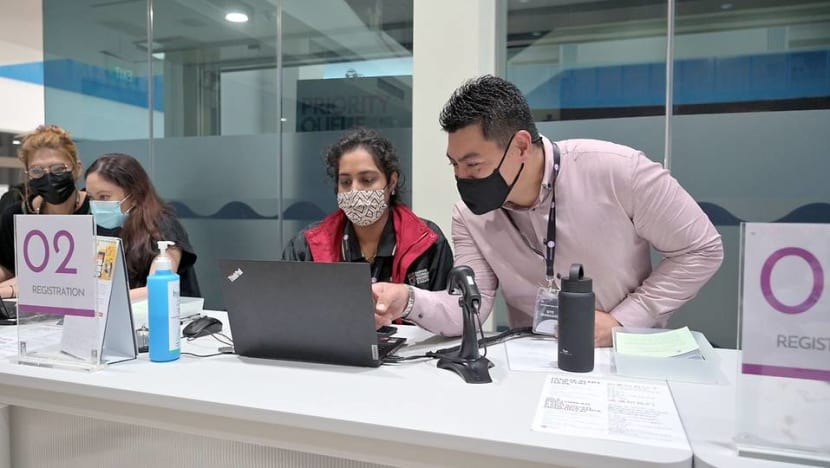
After their queue number is called at designation waiting area, members of the public are ushered to the registration counters where their details are taken down, and medical screening is conducted. This ensures that people are able to take the vaccine.
They are then guided to the vaccination booths, and upon receiving the vaccine, move to an observation area where they must wait for 30 minutes, before proceeding with the discharge.
READ: Govt targeting one community vaccination centre in every town by end-March: Chan Chun Sing
"There are quite a few paradoxes ... because when we start off to design a VC (vaccination centre), first, it has to be quickly built and yet its got to be established durably because it's got to serve a large number of people over a long period of time," said Dr Chiam.
"Two, it's got to be compact, because you want people to walk as few steps as possible. But yet at the same time it's got to be spacious enough to accommodate large groups of people.
"And third is that it's about protocols and processes here. But yet, it's got to be designed with the personal touch in mind."
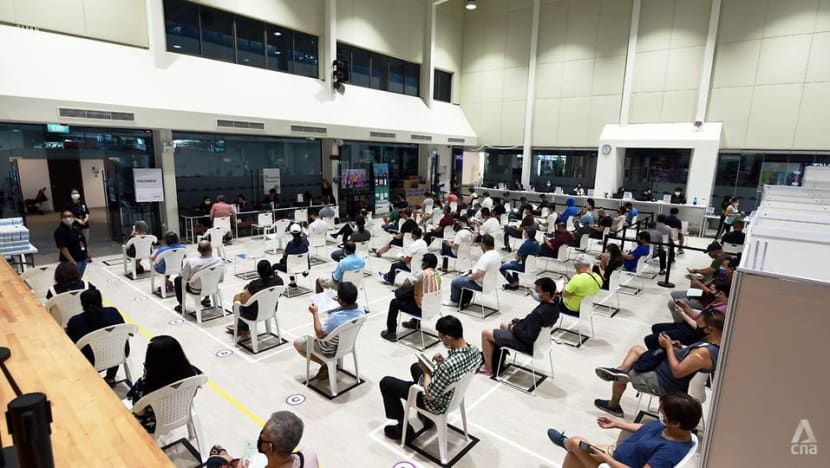
It is important that each dose of the vaccine does not go to waste, Dr Chiam was keen to stress.
So when it comes to storage, each centre has a standby fridge to keep the vaccines at the correct temperature.
"Both fridges have a UPS - an uninterruptible power supply - so in the event of a power failure, the fridges will still go on and the vaccines are not wasted, because they are a national treasure," he added.
Should members of the public miss their appointments, individuals who are on a pre-planned list will take their place. This ensures that the vaccines are not wasted, added Mr Choo.
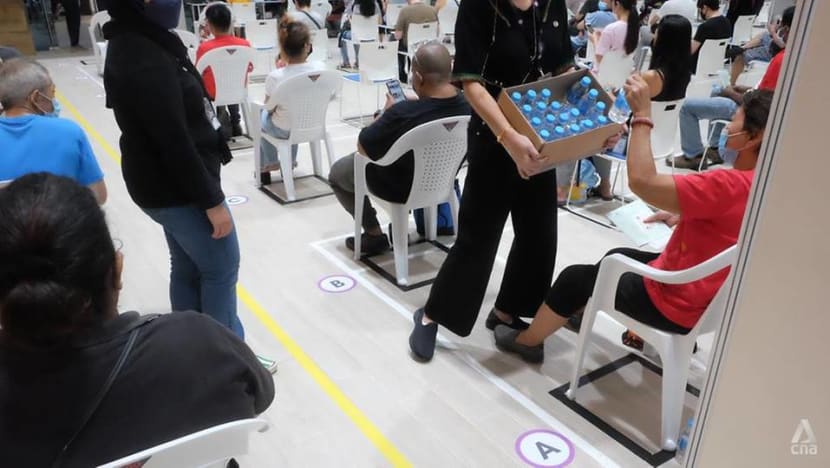
"On our end, we also do the back end checks to ensure that they actually meet the criteria, they are eligible before we ask them to come down," he said.
The focus of each of Minmed's vaccination centres is the person receiving the vaccine, said Dr Chiam.
"It's about the vaccinee and ... their journey with us. So when they come in, the first touch point, are we serving you on time and promptly? Are you waiting unnecessarily? When we register you, we are careful to listen to your concerns, your medical history and go through your medication and make sure that your questions are well answered," he said.
And it is by putting the individual first that the national vaccination drive can be sustained, added Dr Chiam.
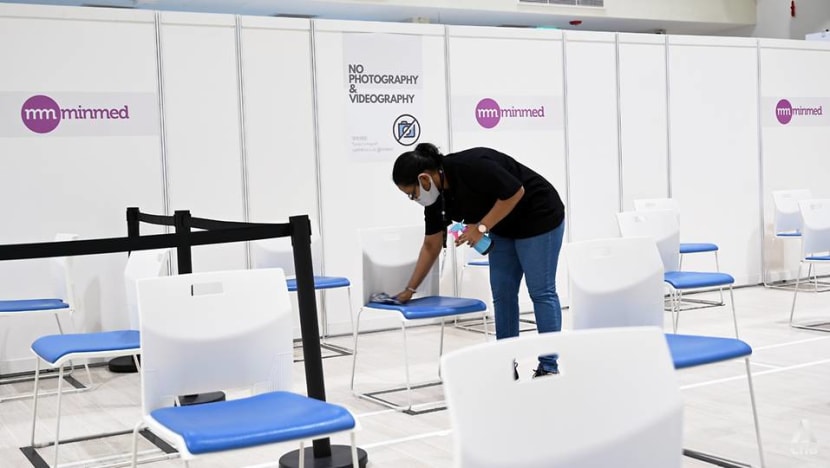
"All this is all towards building a positive experience with the vaccinee. And if they then receive the jab, get it here professionally, yet remember it was done nicely and they feel assured, when they go home, they tell their friends, family.
"That word of mouth referral is actually the most powerful force to getting more people to come. And it gets us towards the destination."
BOOKMARK THIS: Our comprehensive coverage of the coronavirus outbreak and its developments
Download our app or subscribe to our Telegram channel for the latest updates on the coronavirus outbreak: https://cna.asia/telegram












